This is a late answer, but this can be done using Javascript Clipper Library. The desired operation is Simplifying (which internally uses Union operation) and it removes self-intersections where edge(s) crosses other edge(s).
Note! Javascript Clipper 5 cannot ensure that in all cases the solution consists only of truly simple polygons. This like special case is the vertices touching edges. Clipper 6 (Javascript version not yet ready) can handle these like special cases also.
Simplifying Polygons using Javascript Clipper Main Demo
You can play with Clipper using Javascript Clipper Main Demo. Click Polygons-Custom and you can input your own polygon there and then make the desired operations.
Let's take your example:
[[7,86, 196,24, 199,177, 47,169, 51,21, 224,102, 223,146, 7,140, 7,86]]
If you input these points in demo (as Subject or Clip), you get the following polygon:

Then make a Simplify operation which produces the following solution:

If you click Solution in Polygon Explorer, you can see the coordinates of simplified polygon:
[[199,177, 47,169, 47.75,141.13, 7,140, 7,86, 49.62,72.02, 51,21, 114.51,50.73, 196,24, 197.28,89.49, 224,102, 223,146, 198.38,145.32]]
Code example of Simplifying Polygons
And finally, I put the full functional code in JSBIN, which includes SVG drawing functions and is therefore rather long:
<html>
<head>
<title>Javascript Clipper Library / Simplifying Polygons</title>
<script src="clipper.js"></script>
<script>
function draw() {
var subj_polygons = [[{"X":7,"Y":86},{"X":196,"Y":24},{"X":199,"Y":177},{"X":47,"Y":169},{"X":51,"Y":21},{"X":224,"Y":102},{"X":223,"Y":146},{"X":7,"Y":140},{"X":7,"Y":86}]];
var scale = 100;
subj_polygons = scaleup(subj_polygons, scale);
var cpr = new ClipperLib.Clipper();
cpr.AddPolygons(subj_polygons, ClipperLib.PolyType.ptSubject);
var solution_polygons = new ClipperLib.Polygons();
solution_polygons = cpr.SimplifyPolygons(subj_polygons, ClipperLib.PolyFillType.pftNonZero);
//console.log(JSON.stringify(solution_polygons));
var svg = '<svg style="margin-top:10px; margin-right:10px;margin-bottom:10px;background-color:#dddddd" width="240" height="200">';
svg += '<path stroke="black" fill="yellow" stroke-width="2" d="' + polys2path(solution_polygons, scale) + '"/>';
svg += '</svg>';
document.getElementById('svgcontainer').innerHTML = svg;
}
// helper function to scale up polygon coordinates
function scaleup(poly, scale) {
var i, j;
if (!scale) scale = 1;
for(i = 0; i < poly.length; i++) {
for(j = 0; j < poly[i].length; j++) {
poly[i][j].X *= scale;
poly[i][j].Y *= scale;
}
}
return poly;
}
// converts polygons to SVG path string
function polys2path (poly, scale) {
var path = "", i, j;
if (!scale) scale = 1;
for(i = 0; i < poly.length; i++) {
for(j = 0; j < poly[i].length; j++) {
if (!j) path += "M";
else path += "L";
path += (poly[i][j].X / scale) + ", " + (poly[i][j].Y / scale);
}
path += "Z";
}
return path;
}
</script>
</head>
<body onload="draw()">
<h2>Javascript Clipper Library / Simplifying Polygons</h2>
This page shows an example of simplifying polygon and drawing it using SVG.
<div id="svgcontainer"></div>
</body>
</html>


